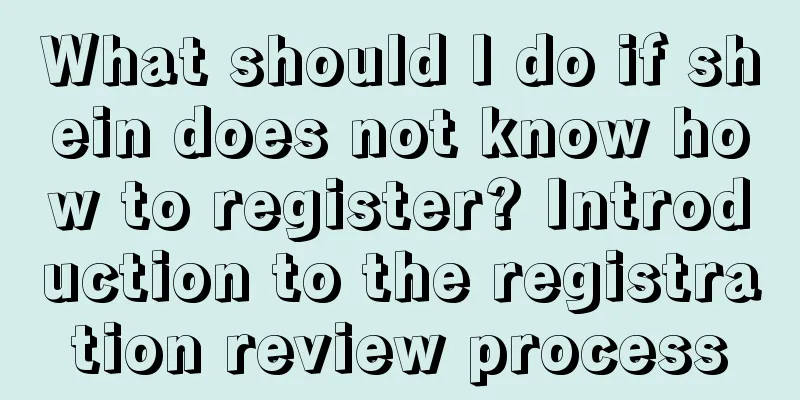Activity operation|Isn’t it just writing an activity operation plan?

No matter what kind of operational activities you do to attract new customers or promote sales, you can’t do without a plan. Reporting upward, assigning tasks downward, collaborating externally, and dividing work internally all require an activity operation document. However, an event operation plan is not just a document. Behind a complete and beautiful plan document is a comprehensive design of event analysis, creative planning and on-site operations. It is necessary and important to write a good event operation plan. 1. What is the use of activity plan?An activity operation plan refers to a written plan document and execution instructions developed for specific operational activity goals to better ensure that the activity goals are achieved. A qualified activity operation plan has three standards:
Writing an activity operation plan is, on the one hand, for yourself to help you better design and sort out the ideas and elements of the activity. On the other hand, it is also for "others":
From this perspective, the event operation plan is still very useful, so write it well. 2. Activity Plan 5W2H1EThere is a guiding model for writing activity plans: 5W2H1E. You guessed it right, it is also the first letters of a bunch of English words:
It is easy to understand. The 5W2H1E model can help us quickly evaluate the feasibility when writing an activity plan, build a systematic activity idea, and ensure the comprehensiveness of the plan. So before writing the plan, ask yourself 5+2+1=8 questions. After writing the plan, ask yourself these 8 questions again. II. 10 Elements of Activity PlanA complete activity plan includes 10 elements, which will have different emphases depending on the importance and complexity of the activity, but we will still share them in detail. 1. Event BackgroundThe background of the activity refers to the background conditions and problem requirements under which this operation activity is initiated. The background part can explain the necessity of the activity, that is, "why should this activity be done". The SCQA model (from "The Pyramid Principle") can be used to write the background, which can describe the background in a more structured way and explain the cause of the activity:
The more important, the more complex, or if it is a new activity idea, it needs to be highlighted in the activity background section. For activities with a high degree of consensus or more routine, the activity background can be appropriately simplified. 2. Activity ObjectivesActivity goals, that is, the operational purpose and results to be achieved through the activity, should be specified as much as possible using quantitative indicators. Activity goals are estimates and expectations of activity effects, reflecting the orientation and feasibility of the activity, and serve as a measure of activity effects during and after the activity. There is also a smart principle for goal setting, namely specific, measurable, attainable, relevant, and time-bound. I won’t go into details. The specific indicators are determined more by referring to historical or similar activity data of competitors to set overall goals, and then the overall goals are adjusted by summarizing the estimated data according to the activity links. 3. Active UsersActivity users refer to the user groups that the activity is targeting. Binding activity goals and limiting user groups can guide the design of activity gameplay and improve gameplay effects. When the user group of an activity is relatively single, it is sufficient to define the user group and explain the main characteristics of the users. When the user composition is diverse, it is necessary to consider differentiated activity strategies, split the user composition for user stratification analysis, and guide the subsequent activity design. 4. Activity themeThe theme of the event, or the "gimmick" of the event, is usually a title-style copy that highlights the core benefits and highlights of the event. Clarifying the core benefits of the event ensures the consistency of event planning and operation; at the same time, highlighting the highlights of the event is conducive to the promotion and dissemination of the event and attracting more target users to pay attention to and participate in the event. Some ideas for writing activity themes:
5. How to play the activityActivity gameplay is the core content of activity planning, that is, the main form packaging, participation process, and rule description of the operation activity. This part of the content determines the final effect of the activity planning operation and is also the core of the program review and operation. When writing activity rules, the user perspective should be the main focus, supplemented by the operation perspective, and more attention should be paid to how users participate in the activity. The main forms of presentation of the activity in the form packaging (lottery, bargaining, coupon issuance) can be assisted by key page prototype diagrams; the participation process is the specific behavioral process and feedback rules for users to participate in the activity, which can be assisted by flowcharts; the rule description is the detailed rules of the activity, such as reward rules, failure rules, etc., which should be as comprehensive and clear as possible. 6. Time periodThe time cycle refers to the time phase and operation arrangement of the entire process of activity operation, including the start and end time, and the phased time of the activity. The binding of activity time nodes affects the specific actions and effects of the operation, and the operation arrangement of phased periods can effectively promote and improve the effect of the activity. The time cycle is not just a simple date and time, it includes the activity time nodes and cycle stages. Under the premise of ensuring the timeliness of the activity, give priority to festival/event nodes, and you can also combine limited-time and regular methods to amplify the activity operation effect. The stage division of longer-cycle activities: promotion warm-up period, start-up climax period, closing return period, etc., combined with consideration of the operation focus and actions of each stage. 7. PromotionPromotion refers to the promotion and operation activities used to reach more target users, and the channels and methods to increase the exposure of activities. Reaching and attracting more users to participate in the activities, ensuring the scale of users participating in the activities, and maximizing the effectiveness of the activities. This part requires sorting out various promotional resources inside and outside the site, determining the available resources and schedules suitable for the event, and designing matching promotional content in a targeted manner. 8. Cost-benefitCost-benefit refers to the activity's cost budget and expected ROI (return on investment). The scale and efficiency of the activity's investment are the basic support for the activity's operation costs and determine how the activity is operated. Cost items include reward costs, promotion costs, subsidy costs, etc. They should be estimated in combination with the activity goals, taking into account the overall cost, cost per user, or fixed cost and variable cost, and clearly listing the expenses of the activity. Combined with the estimated target revenue and cost, the ROI (return on investment) of the activity is calculated, which is also part of the activity goal, to determine the expected activity revenue effect. 9. Division of labor and cooperationDivision of labor and cooperation refers to the external resource support and teamwork involved in the operation of an event. This is the premise for the effective implementation and implementation of the event operation project, and it is also a means to reduce communication costs and problems in external cooperation. Larger e-commerce events involve the participation of R&D teams, product teams, data teams, marketing teams, and community/customer service teams. The plans must clearly state the matters and time arrangements of all parties. Division of labor and cooperation are usually planned and managed in the form of a project Gantt chart after the core gameplay of the event is confirmed and before implementation. 10. Risk AssessmentRisk assessment refers to the possible risks that may affect the effective implementation of the activity and the corresponding response methods during the operation of the activity. Clarify the activity risks and response methods in advance to reduce the problems in the operation of the activity and maximize the implementation and effectiveness of the activity. Common activity risks include experience risk, customer complaint risk, and cost risk. Refer to historical activity experience and data analysis to determine the probability of risk occurrence and the magnitude of impact, and rank and explain the risks. Risks that can be reasonably avoided should be modified to avoid them, and risks that cannot be avoided should be designed and prepared in advance. The above is the discussion about the preparation of activity plans. In the different stages from the initiation and planning of the activity to the finalization of the implementation, the activity plan also has different focuses and is constantly improved. In the early stage of upward reporting and evaluation of the plan, the plan rhythm is basically complete, the activity background, activity goals, activity users, activity gameplay, cost-benefit, and risk assessment content are complete, and the activity theme, time period, publicity and promotion, and division of labor and cooperation can be weakened. During the cooperation preparation stage after the plan is finalized, we will further improve the gameplay of the activity, clarify the theme of the activity, and carry out publicity and promotion. The focus will be on the time period and division of labor and cooperation to ensure effective external communication. During the subsequent execution and operation phase of the activity, the time period will be further clarified and refined, the specific content and time schedule of the division of labor and cooperation will be determined, and the internal division of labor and SOP content of the operation team will be increased. That’s about it, write a plan and think through the activity. |
<<: 2021 Operator Annual Work Summary——Universal Activity Program Planning
>>: From the perspective of event operations, why is the Beijing 2022 Winter Olympics so popular?
Recommend
Is Alibaba's cross-border e-commerce easy to do? How to do it well?
Alibaba also has cross-border e-commerce platforms...
There are so many Christmas advertisements overseas, this is what brands should do to break through in marketing!
Every Christmas is a time for brands to conduct co...
Can eBay operators contact customers directly? What do operators need to do?
In the process of cross-border e-commerce, communi...
What are the entry requirements and fees for Lazada? How to run a store?
Lazada was founded in 2012 and is headquartered in...
Is the total balance displayed in cross-border e-commerce stores in US dollars?
In the field of cross-border e-commerce, many sell...
7 Ways to Become a Category Owner
If a brand can become the first brand we think of ...
Is “Healthy Milk Tea” a tax on your IQ?
Health preservation for college students, health p...
Xiang Zuo's first broadcast GMV exceeded 10 million, "abstract" became the new code for bringing goods
In the new trend of live streaming sales, "ab...
Those new consumer brands that were once popular but are now miserable
New consumer brands once quickly became popular th...
Why has coriander become the “traffic king” in brand marketing?
Is coriander the favorite of brands in developing ...
After 9 years of operation, how do I understand "user growth"?
Editor's note: In this article, the author sha...
Co-creation - Re-understanding the brand: Hamlet, the Ship of Theseus and For the Tribe (2)
Brands are familiar to everyone, and everyone has ...
Pinduoduo's internal optimization ideas
Internal optimization is the core that determines ...
Does the Amazon payment account have to be a legal person? How to avoid association?
Merchants who open stores on Amazon need to prepar...
Is suez cross-border e-commerce real? Is suez a cross-border e-commerce?
Compared with the saturated domestic e-commerce ma...









